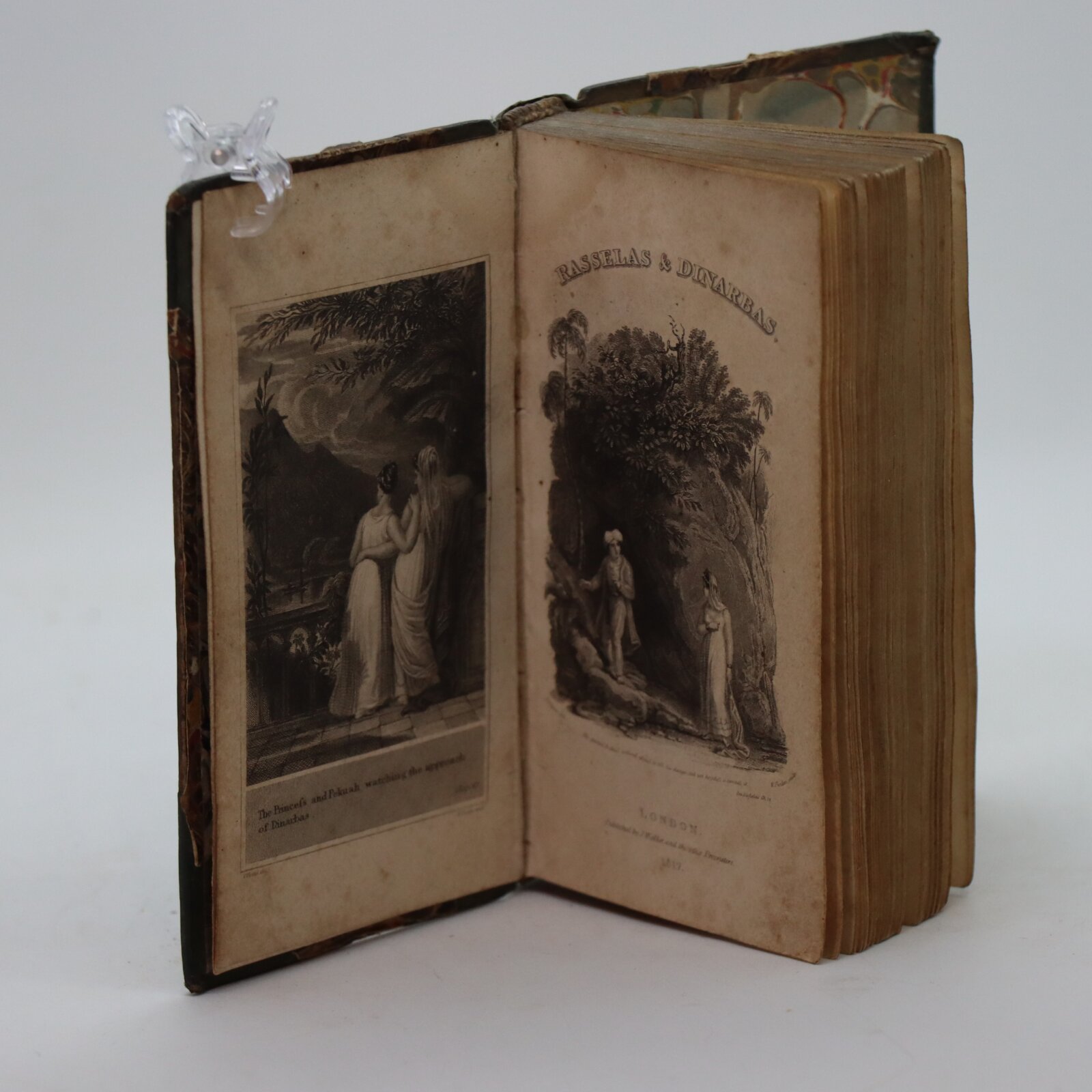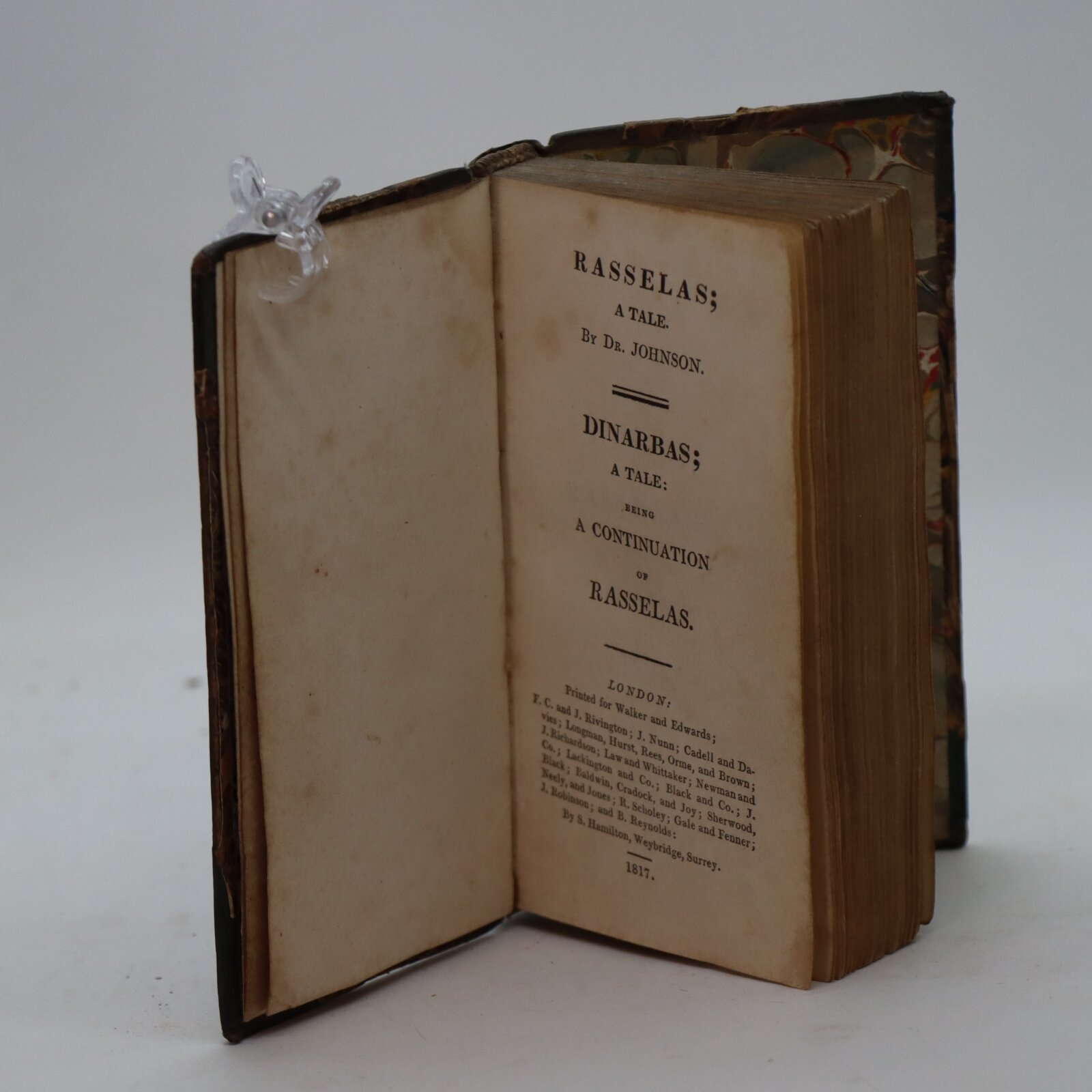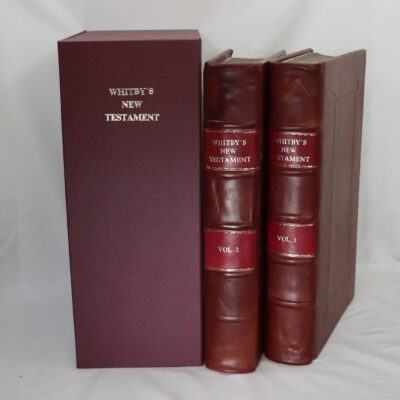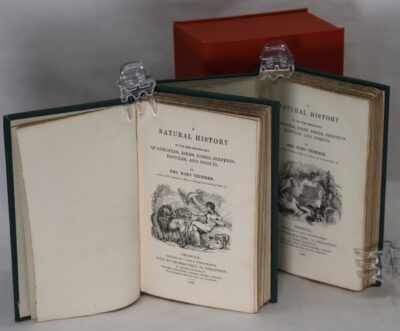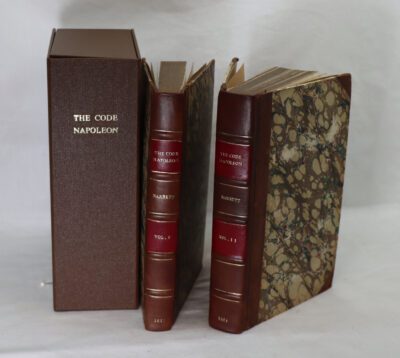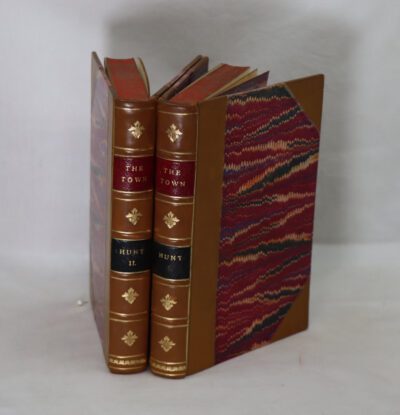Rasselas & Dinarbas.
By Dr Johnston
Printed: 1817
Publisher: F C & J Rivington. London
| Dimensions | 8 × 13 × 2.5 cm |
|---|---|
| Language |
Language: English
Size (cminches): 8 x 13 x 2.5
Condition: Fine (See explanation of ratings)
Your items
Item information
Description
Green calf spine with green and yellow marbled boards. Gilt title and decoration on the spine.
It is the intent of F.B.A. to provide an in-depth photographic presentation of this book offered so to almost stimulate your feel and touch on the book. If requested, more traditional book descriptions are immediately available.
A grand copy of the First Duo Edition
The History of Rasselas, Prince of Abissinia, originally titled The Prince of Abissinia: A Tale, though often abbreviated to Rasselas, is an apologue about bliss and ignorance by Samuel Johnson. The book’s original working title was “The Choice of Life”. The book was first published in April 1759 in England. Early readers considered Rasselas to be a work of philosophical and practical importance and critics often remark on the difficulty of classifying it as a novel.
Rasselas was a jumping-off point for at least two continuations by other authors:
Dinarbas (1790) by Cornelia Knight – Dinarbas : a tale : being a continuation of Rasselas, prince of Abissinia.
Rasselas is seen to express hostility to the rising imperialism of his day and to reject stereotypical “orientalist” viewpoints that justified colonialism. Johnson himself was regarded as a prophet who opposed imperialism, who described the Anglo-French war for America as a dispute between two thieves over the proceeds of a robbery.
Samuel Johnson (18 September 1709 [OS 7 September] – 13 December 1784), often called Dr Johnson, was an English writer who made lasting contributions as a poet, playwright, essayist, moralist, critic, biographer, editor and lexicographer. He was a devout Anglican, and a committed Tory. The Oxford Dictionary of National Biography calls him “arguably the most distinguished man of letters in English history”. James Boswell’s Life of Samuel Johnson was selected by Walter Jackson Bate as “the most famous single work of biographical art in the whole of literature”.
Born in Lichfield, Staffordshire, he attended Pembroke College, Oxford until lack of funds forced him to leave. After work as a teacher, he moved to London and began writing for The Gentleman’s Magazine. Early works include Life of Mr Richard Savage, the poems London and The Vanity of Human Wishes and the play Irene. After nine years’ effort, Johnson’s A Dictionary of the English Language appeared in 1755 with far-reaching effects on Modern English, acclaimed as “one of the greatest single achievements of scholarship”. Until the arrival of the Oxford English Dictionary 150 years later, Johnson’s was pre-eminent. Later work included essays, an annotated The Plays of William Shakespeare and The History of Rasselas, Prince of Abissinia. In 1763 he befriended James Boswell, with whom he travelled to Scotland, as Johnson described in A Journey to the Western Islands of Scotland. Near the end of his life came a massive, influential Lives of the Most Eminent English Poets of 17th and 18th centuries.
Tall and robust, he displayed gestures and tics that disconcerted some on meeting him. Boswell’s Life, along with other biographies, documented Johnson’s behaviour and mannerisms in such detail that they have informed the posthumous diagnosis of Tourette syndrome, a condition not defined or diagnosed in the 18th century. After several illnesses, he died on the evening of 13 December 1784 and was buried in Westminster Abbey. Thereafter he was increasingly seen to have had a lasting effect on literary criticism and even claimed to be the one truly great critic of English literature.
Ellis Cornelia Knight (27 March 1757 – 18 December 1837) was an English gentlewoman, traveller, landscape artist, and writer of novels, verse, journals, and history. She had the acquaintance of many prominent figures in her lifetime, from members of the circle of Samuel Johnson and Sir Joshua Reynolds in her girlhood; Cardinal de Bernis, Sir William and Lady Emma Hamilton, and Lord Horatio Nelson during her Italian sojourn; and members of the British Royal Family during her service to Queen Charlotte and Princess Charlotte Augusta of Wales. She corresponded with or met other writers of her time including Frances Burney, Germaine de Staël, Lady Charlotte Bury, and Jane Porter.
Want to know more about this item?
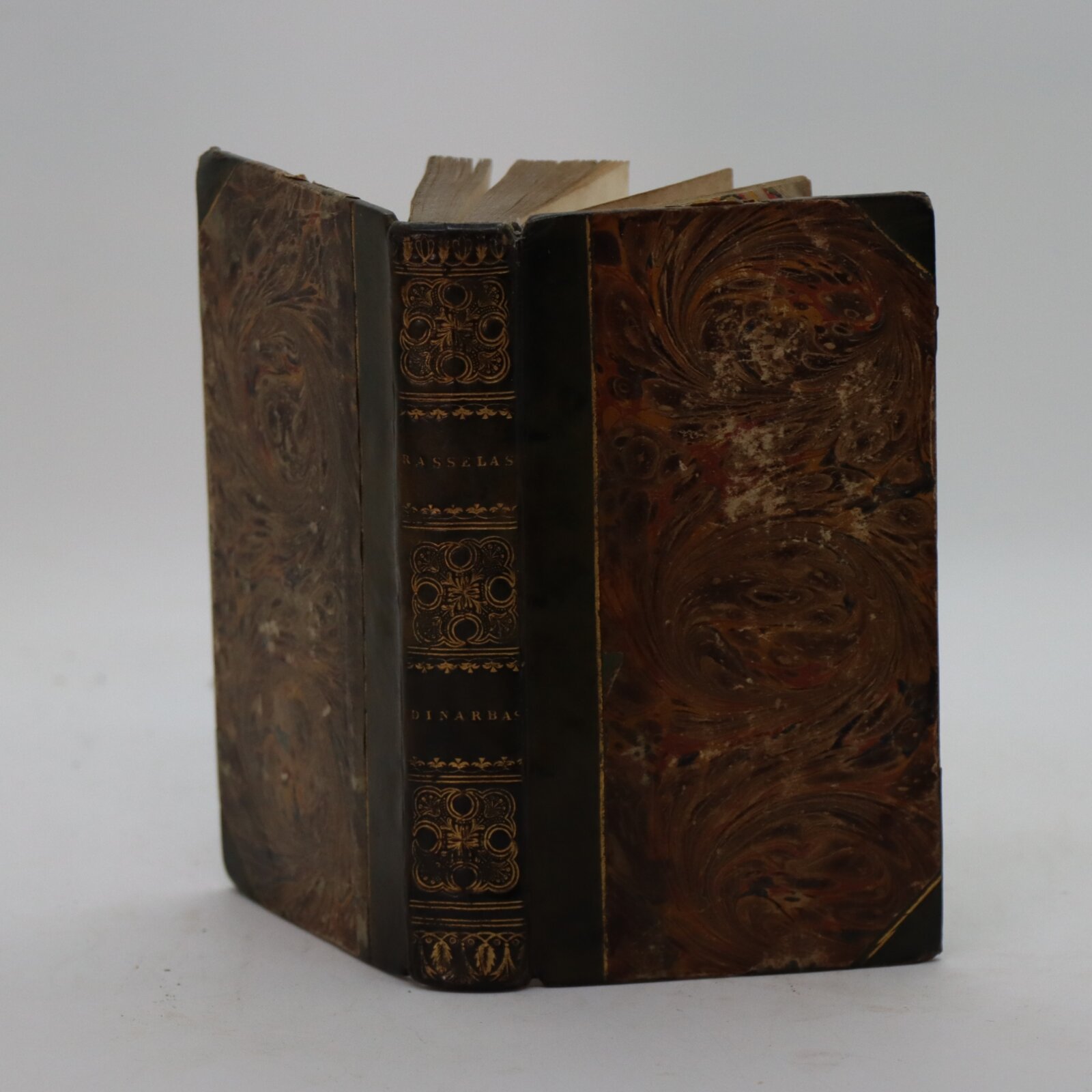
Related products
Share this Page with a friend

